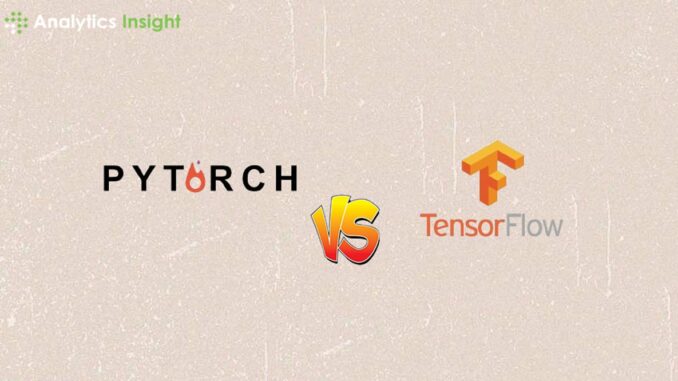

The two top open-source libraries for AI are TensorFlow, with more than 16000 stars, and PyTorch, with more than 21000 stars in GitHub. They have relational and non-relational data storage capabilities and contain a wide range of tools for machine learning and deep learning, though there are some differences between the two. TensorFlow vs PyTorch: Both are popular frameworks used in deep learning, each with its strengths and advantages. This article also focuses on the comparison of two prominent AI frameworks – TensorFlow and PyTorch – and their key attributes, effectiveness, and areas of application to assist you in choosing the proper tool for the implementation of your artificial intelligence projects.
TensorFlow: An Overview
Developed by: The Google Brain Team should be more than capable of pulling off the task as it has been assembled to focus on exploring uncharted frontiers that will make a significant impact on the company.
Key Features:
Comprehensive ecosystem
Mobile TensorFlow for mobile/embedded platforms
TensorFlow. js for JavaScript developers
TensorFlow Extended (TFX) about production pipelines
Pros:
The largest repository of study material and manipulating techniques
It has ‘Scale,’ which is Excellent for scaling models and deploying at scale.
The corporations and the community still have tremendous support for the event.
Cons:
Slightly steeper learning curve for onset to intermediate level players
If we compare the code to PyTorch, then it is more verbose.
Op sourced from TensorFlow, which Google developed in 2015, features a vast ecosystem that can address multiple aspects of machine learning.
PyTorch: An Overview
It was developed by learning computer engineering and programming in high school. Then I got my degree in computer engineering from the state university, after which I got a job at Facebook’s AI Research Lab.
Key Features:
Dynamic computation graph
Clearly, the project allows users to access API without complicating it.
TorchScript, Developed for Smooth Model Conversion
Extensive support to the utilization of GPU in the acceleration of data retrieval
Pros:
Easy to learn and comprehend the use of the software.
A more Pythonic approach to code structure and greater flexibility in design
Dynamic graphing, as applied in debugging, makes it easier to identify a specific problem within a code.
Cons:
Actually, Keras is compared to TensorFlow in that it possesses a more miniature ecosystem.
Not ready for prime time in some production-oriented environments
PyTorch is an open-source deep-learning framework introduced by Facebook in 2016. It is frequently praised for its dynamic computation graph and easy-to-use Programming Interface.
Key Differences
Computation Graphs:
When deciding between TensorFlow vs PyTorch, it’s essential to consider factors such as community support, compatibility, and learning curve.
TensorFlow: Static computation graphs (or “define-and-run” approach) are used, which means that when the model is activated, the graph is already defined. This makes it quite flexible for optimizations and efficient deployment, though it may hinder the debugging process.
PyTorch uses dynamic computation graphs or what is known as “define-by-run” architecture, which essentially means constructing the graph while the rest of the computation is taking place.
Ease of Use:
TensorFlow: While TensorFlow provides excellent scalability in terms of computing accuracy, the tools are somewhat more difficult to use, especially for beginners. However, it provides the most significant capabilities for actual production.
PyTorch: In terms of user-friendliness and a pythonic approach, PyTorch is better, easier to learn and adapt, and sees fit for a short turnaround.
Ecosystem and Deployment:
TensorFlow: Has a more vast range of applications with application-embedded components such as TensorFlow Lite and TensorFlow. Java Script) and TFX, making it highly flexible depending on the application in which it is used, be it a standalone mobile application or a large-scale production system.
PyTorch: However, compared to TensorFlow, PyTorch is relatively new, and hence, the ecosystem surrounding PyTorch is still not as developed as TensorFlow.
Performance:
Researchers and developers often debate the merits of TensorFlow vs PyTorch as both frameworks continue to evolve with new features and updates.
TensorFlow: Because TensorFlow utilizes static graphs, it is beneficial in a production setting, especially for highly intricate models and massive and highly distributed environments.
PyTorch: It supports advanced features such as dynamic graphing and can provide superior performance in many cases as opposed to TensorFlow, but it might need to be optimized for large-scale production systems.
Use Cases
TensorFlow:
The reanalysis of large data sets is the most prominent type of large-scale machine learning application.
Production-level deployment
Artificial intelligence applications in mobile and web-based environments
Training the model and optimizing the same
PyTorch:
Research and development
Innovation strategies, on the one hand, include concept development and reporting, technology platforms or scoping, and prototyping and experimentation.
Annotation with Python-based data science use cases

Be the first to comment